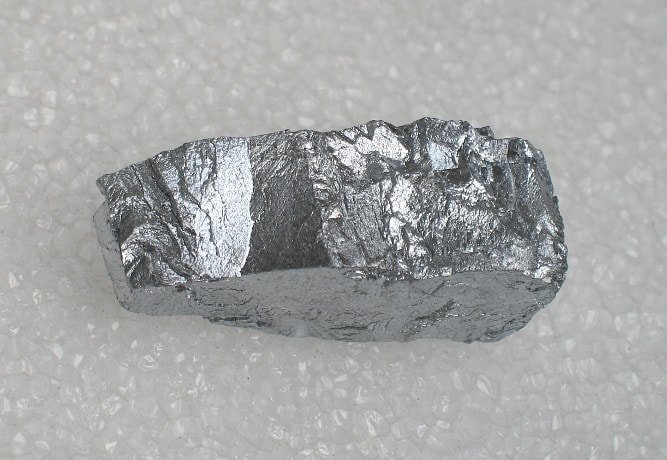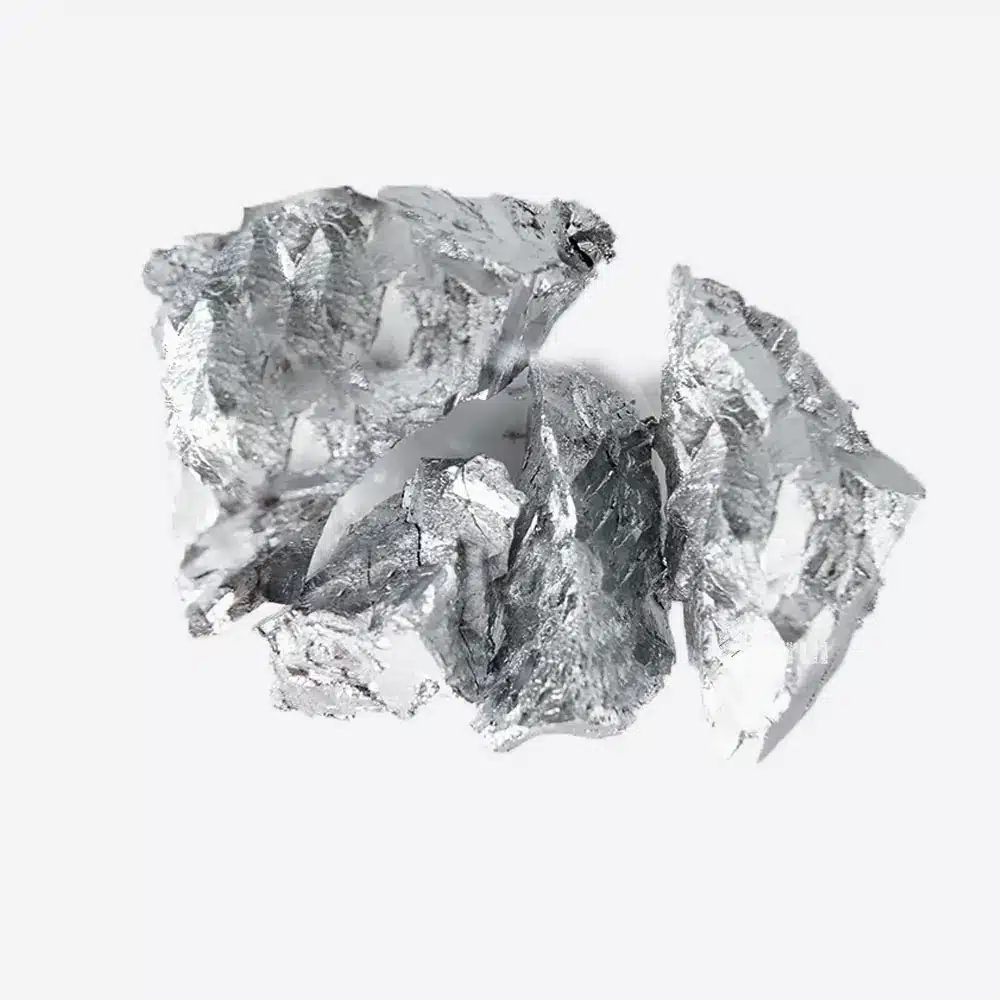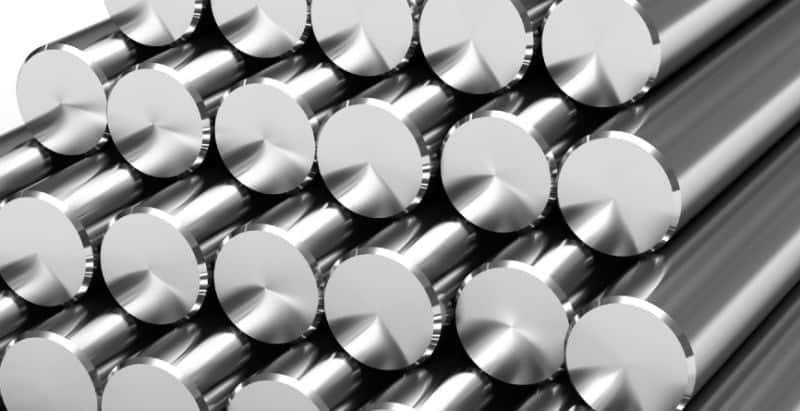Find out the wide spheres of chrome metal use in automotive, aerospace, industry, and decoration, including the chrome plating process . Read about chrome plating, alloys and why chrome is needed in the current manufacturing.
Chrome metal, otherwise referred to as chromium is one of the most valuable and versatile metals that exists in the contemporary industry. This shimmering corrosion-resistant metal is what transformed the applications of innumerable applications in many facets including the vehicle industry and aerospace ventures. Knowing the use of chrome metal helps in establishing its vital role in functional and ornamental use, including enhanced durability and various industrial applications that dominate our lives.

Such is the significance of chrome metal that goes far beyond the shinny look that everyone is used to on an auto bumper or in a kitchen. Through these special characteristics, the presence of chromium metal in a super-alloy is able to facilitate extremely challenging applications like aerospace turbo reactors, land-based gas turbines, oil and gas industries, medical alloys, nuclear, chemical and automotive industries. The exceptional property of this metal to support the process of durability growth, corrosion resistance, and the operations under extreme conditions determines the necessity of using it in a huge number of industrial issues, especially for corrosion protection .
The Fundamentals of Chrome Metal

The chromium metal is superior in its qualities that make it highly demanded across industries. Its aptitude to create a passive layer of oxide in nature gives it a smooth surface better corrosion resistance, and its hardness and strength make it last long. The chromium (usually known as chrome) is a natural element. It is a metal which can be used as a plating, forming a chrome layer, and not as a solid.
The peculiar features of metal are the high melting point, and high wear resistance, and the ability to retain the property value in severe environmental conditions. The above core properties are the basis of the wide variety of applications of chrome in different industries.
Chrome Metal in Automotive Applications
The automotive industry is one of the major buyers of chrome metal used both as a functional and decorative product, including decorative plating especially in car parts. It supplies products like rims, bumpers and exhausts the shine, glam look of the cars and motorbikes giving it a very metallic, polished shine and non-corrosive material.
Other than being used aesthetically, chrome is also vital in engine pats and mechanical products. The chrome-molybdenum alloy steels are commonly found in high-stress automobile parts such as automobile engines, often enhanced through chrome electroplating in a chrome plating vat , because of their strength per weight characteristic. These are granter shafts, connecting rod, and transmission models where strength and efficiency is the key.
Automotive industry also has been using chrome due to its tendency to inhibit friction and causes the wearing off of moving parts. Cylinders of engines, piston rings, and valves are usually given chrome plating, including various types of chrome plating, in order to increase their spans of operations and enhance the efficiency of the overall engine.
Industrial Chrome Plating Applications
The industrial chrome plating plays urgently essential features in the manufacturing and heavy industrial processes. The hard chrome plating is identified by the resistant feature to the corrosion and wear. Hard chrome is perfect in the industry or in any application where there is need to be exposed to severe conditions or extreme weather.
Hard chrome plating is often used when manufacturing equipment, hydraulic cylinders, and industrial molds since hard chrome plating contributes to the durability and efficiency of these components. The plating process makes it have a hard and wear resisting surface capable of the harsh environments that continuous industrial process manufacturing requires.
The chrome plating is an essential element in textile machines, printing equipment, and plastic injection molds as they have a very stringent tolerance requirement and have to work smoothly. Industrial maintenance needs are also minimal and equipment life is prolonged due to low friction characteristics of chromium plated parts, as well as those treated with nickel plating, therefore it is an economical alternative to use in the industries.
Chrome in Aerospace and Defense
Due to its ability to work under any kind of extreme environment, the aerospace business has continuous need of aerospace metals like chrome metal in the manufacture of aircraft or spacecrafts. Aerospace parts and medical equipment are frequently plated with a thin chrome layer and dense chrome.
Aviation engines work with some superalloys made of chrome that survive the temperatures and the strains of the flight. Critical parts of engine, landing gears, and hydraulic systems usually employ the use of chrome plating or chrome alloys to guarantee reliability and safety.
Some of the defense applications entail armored vehicle parts, weapon systems, and military equipment where durability and resistance to corrosiveness are essential in the operations. The capability of chrome to resist the harsh element is the most prized feature in military applications involving metal parts .
Medical and Healthcare Applications
The medical industry relies heavily on chrome metal for surgical instruments, implants, and The medical field is dependent on chrome metal in the production of surgical tools, implants and medical gear. Aerospace parts and medical equipment are frequently plated with a thin dense chrome. Chrome is biocompatible and corrosion resistant, applied with proper adhesion as a thin layer so it is not harmful to be in long-term contact with human tissue.
The smooth non-porous chrome plated surface of the surgical tools helps in eliminating bacteria growths and making the tools easy to sterilize. Ortho implants may be of chrome alloys which render the implants with the required strength and biocompatibility to integrate with the human bone.
Hospitals beds, operating tables and diagnostic equipment are chrome plated in order to serve functional and sanitary purposes. Chrome-plated medical equipment allows infection control procedures in health institutions due to the cleaning ability of its surface.
Chrome Alloys and Stainless Steel
The medical field is dependent on chrome metal in the production of surgical tools, implants and medical gear. Aerospace parts and medical equipment are frequently plated with a thin dense chrome. Chrome is biocompatible and corrosion resistant, so it is not harmful to be in long-term contact with human tissue.
The smooth non-porous chrome plated surface of the surgical tools helps in eliminating bacteria growths and making the tools easy to sterilize. Ortho implants may be of chrome alloys which render the implants with the required strength and biocompatibility to integrate with the human bone.
Hospitals beds, operating tables and diagnostic equipment are chrome plated in order to serve functional and sanitary purposes. Chrome-plated medical equipment allows infection control procedures in health institutions due to the cleaning ability of its surface.
Decorative Chrome Applications
The most common use of chrome is in stainless steel manufacturing which is usually manufactured with a composition of 10.5 and 30 percent chromium. There are other stainless steels that perform very well even under a high temperature of 800 o C. Excellent quality chrome steel can be used to make machinery, tanks, and armored vehicles.
When steel is added with chrome, passive oxide film is formed and this is what makes stainless steel have the corrosion-resistant property. That is the reason why chrome-bearing stainless steels are practically required in chemical processes, food manufacturing and marine environment.
Special alloys of chrome are used to support a particular industry; this ranges to high-temp power generation, processing equipment, and architecture where more strength is needed and also where an attractive appearance is desirable.
Chrome in Tool and Die Manufacturing
Aesthetic chrome plating helps in making the common objects look appealing due to their shiny appearance that increases the value of the object. The other common applications could be kitchen metals, taps and tools.
The mirror surface of decorative chrome plating and its easy cleanable characteristic is useful in household fixtures like faucets, door knobs and bathroom accessories. It is non-porous and it also evades tarnishing and can be simply wiped with uncomplicated domestic cleaners.
Architectural uses are handrails, decorative panels, and building hardware in which the decorative nature of chrome serves to enrich the overall design but does so with the practical advantages of resistance to corrosion and durability.
Chemical and Processing Industries
Chrome is commonly used in the tool and die industry in order to produce long lasting and precision tools and various manufacturing equipment. A good portion of ferrochrome consumption today is 15% and its use can be applied in the area of industrial tools, cutting tools, injection moulds, camshafts, dies, bearing and mill rollers, depending on the required plating thickness .
Chrome helps in cutting tools due to their hardness and wear resistance and they increase the lifetime of the equipment as well as its consistency in the machining activity. Die-casting software comprises chrome plating to avert corrosion and the release of finished products.
The precision measuring tools and gauges are usually used with chrome plating to ensure that the right measurements are taken and to withhold wear due to frequent usage. The dimensional stability of the chrome plated surfaces makes the precision tools to be maintained accurately even during a long time.
Chrome in Energy and Power Generation
Refineries, chemical processing plants, and other offensive chemical plants make use of the excellent corrosion resistance of chrome to bear the wrath of aggressive chemicals, including sulfuric acid, and extreme operating conditions. The primary industrial raw materials used in the chemical sector are different chromium salts manufactured with the help of chromite.
Chemical plants reactor vessels, piping systems and process equipment are commonly constructed of an alloy containing chrome as a means of resisting attack by acids, bases, and other aggressive chemicals. Chrome is reliable in the long term which saves the cost of maintenance as well as enhancing plant safety.
Chrome is necessary in maintaining performance under different temperature and chemical exposures used in heat exchangers, distillation columns and separation equipment used in chemical processing chromium plating.
Marine and Offshore Applications
Refineries, chemical processing plants and other offensive chemical plants make use of the excellent corrosion resistance of chrome to bear the wrath of aggressive chemicals and extreme operating conditions metal finishing. The primary industrial raw materials used in the chemical sector are different chromium salts manufactured with the help of chromite.
Chemical plants reactor vessels, piping systems and process equipment are commonly constructed of an alloy containing chrome as a means of resisting attack by acids, bases, and other aggressive chemicals. Chrome is reliable in the long term which saves the cost of maintenance as well as enhancing plant safety.
Chrome is necessary in maintaining performance under different temperature and chemical exposures used in heat exchangers, distillation columns and separation equipment used in chemical processing.
Emerging Applications and Future Trends
The marine environments are special environments, which pose great challenges necessitating the use of the chrome metal, which is of great use in offshore and maritime activities. The salt water plus temperature change and the mechanical stressing necessitate the use of materials that exhibit an exceptional corrosion resistance, including methods like chrome dipping chromic acid.
The chrome plating and chrome alloys are used on ship parts, off shore drilling bodies and marine equipments to withstand corrosion of the sea water. Chrome is highly durable in severe sea environments, so parts that it can be used include propeller shafts, deck equipment, and navigation equipment.
The chrome-containing material is essential in the desalination plants and water treatment centers, as it takes care of the aggressive property of the treated seawater and chemical processing solutions in the water purification processes.
Maintenance and Longevity Benefits
The facility of maintenance in the usage of chrome metals helps in its extensive application in industries copper plating. Chrome plated surfaces do not offer much problem in cleaning, and one can easily get rid of fingerprints, dust, and other forms of contamination with the help of mild soap and water.
Chrome is non-porous and this means that contaminants do not accumulate in the surface and also means that it can be cleaned easily in strict use case like food and medical equipment. This attribute saves the expenses of maintenance as well as offers stable performance for thicker coatings in the long run.
Long term degeneration tests reveal that correctly deposited chrome plating can undertake decades of work with light maintenance, with massive returns on investment in the industries where device dependability profession success.
結論
The wide uses of chrome metal reflects the importance of this metal in enhancing technology and to develop better performance of the products in various industries. Manufacturing processes will carry on to advance variables, and new applications will arise but chrome metal will still remain a necessity in the production of durable, efficient and appealing products according to the rigorous needs of contemporary society. The realization of the role of these applications is of essence in understanding the significance of the chrome metal with regard to its technological development and the manufacturing potential of our industries.

